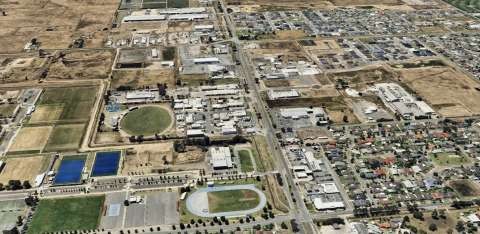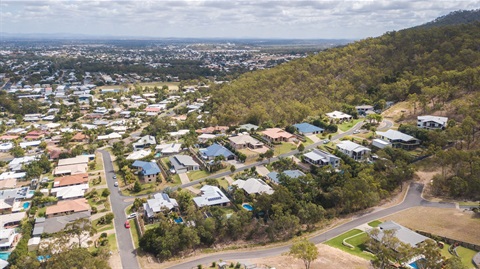As a challenging 2020 draws to a close, the global outlook for dairy is optimistic thanks to strong commodity prices, forecast economic growth in many regions and improving consumer sentiment, according to agribusiness specialist Rabobank.
In its Global Dairy Quarterly Q4 2020: To new beginnings, the bank says
global milk production growth is, however, projected to moderate in 2021 after a strong 2020, with forecast growth of around 2.7 billion litres of milk equivalent compared to 4.5 billion litres in 2020.
Rabobank dairy analyst Michael Harvey said that the milk production growth across the global Big-7 dairy exporters (New Zealand, Brazil, Argentina, Uruguay, EU, US and Australia) had surprised in 2020 – growth in liquid milk equivalent (LME) at its highest since 2017 – but that supply growth would now slow across all export regions.
“The EU and South America should see the largest slowdowns next year, with output in Oceania being flat,” he said.
As seasonal production slows in the northern hemisphere, Mr Harvey said demand projections look to remain stable – and that strengthening retail performance in the wake of COVID would further support commodity prices.
“Commodity prices remain at higher levels after a rally in recent months, and we expect these prices to remain into 2020,” Mr Harvey said. “In Europe and the US, previous dairy stockpiles are now reaching commercial channels, which is further positive good news for prices.”
The report says globally, several factors will positively impact consumer sentiment in key dairy markets in 2021, including the advanced states of several COVID-19 vaccines, less political uncertainty after the US election and forecast economic growth in most regions.
Australian outlook
Milk production had grown in all Australian regions, except Queensland, the report said.
Although with the season having passed its peak in October, Rabobank has now trimmed the full-year production growth forecast slightly, expecting growth to remain at two per cent and reach 8.95 billion litres.
With favourable seasonal conditions and cheaper feed bills after the recent bumper grain harvest, Mr Harvey said Australian dairy farmers were well placed to enjoy consecutive seasons of dairy farm profitability.
Accordingly, the latest Rabobank Rural Confidence Survey, released this month, reported a strong lift in Australian dairy farmers’ confidence levels, and an improvement in investment intentions.
The limited national dairy herd remains a constraint on milk production growth, with cull cow prices still elevated.
“Culling has slowed more recently, but we’ve come off an extended period of higher culling during the drought, and rebuilding the herd – and maximum production – will take time,” Mr Harvey said.
Rabobank’s farmgate milk price forecast has been revised slightly higher at AUD 6.30/kgMS for 2020/21, a figure Mr Harvey said was mostly profitable and supportive of milk supply growth.
And while the domestic dairy market continues to perform well, and the Australian economy is well placed in managing the impacts of the COVID-19 pandemic and re-opening, milk supply growth is outpacing total domestic dairy demand – with Australia’s exportable surplus expected to expand through the rest of the 2020/21 season.
Chinese imports
The report says Chinese dairy imports are set to decline in 2021, with milk production in China projected to increase at a strong pace of around six per cent year-on-year through early 2021, increasing to 6.5 per cent in the second half of the year.
“This is based largely on a short-term push from strong year-to-date Oceania heifer exports to China, however long-term production growth will depend on continuous investments in dairy on the back of improved profitability,” Mr Harvey said.
Meanwhile Chinese dairy inventories have accumulated during the second half of 2020, and LME imports are expected to see a double digit drop in 2021. Rabobank retains a demand growth forecast of nine per cent year-on-year in the first half of the new year, slowing to around three per cent year-on-year in the second half of 2021.
“Higher milk production and moderate demand growth suggest weaker dairy imports in 2021, and higher domestic inventories in China could also potentially limit trade,” Mr Harvey said.
Potential challenges facing 2021
Economic recovery and the impact of less government intervention will determine global dairy demand strength through early 2021 – with governments across the world inevitably having to scale back both dairy purchases and also cash payments supporting consumers, the report says.
“A key reason for strong demand and healthy dairy trade during the pandemic has been government action in many countries during 2020, however an economic recovery supported by a COVID vaccine would help drive demand in these vulnerable countries,” Mr Harvey said.
Impacts of the second COVID wave and lockdown across Europe and the US could have a significant effect on foodservice demand in quarter one 2021, if extended. However retail sales should strengthen further as more meals are consumed at home.
The report also warned La Nina in the southern hemisphere – whilst bringing the potential to strengthen the Australian season – is already delivering drought to southern Brazil and Argentina, and the severity of the event could impact dairy production.








